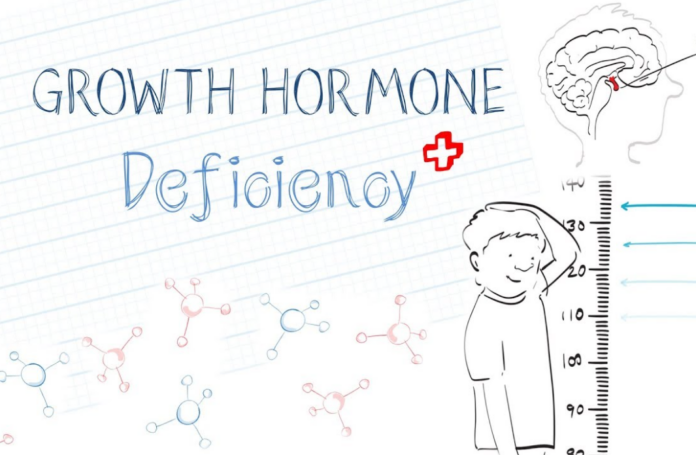Diabetes is a chronic condition that affects millions of people worldwide. Managing diabetes effectively is crucial to prevent complications such as heart disease, kidney failure, nerve damage, and vision problems. One of the most important tools in diabetes management is the HbA1c test. But what exactly is HbA1c, and why is it so vital for diabetes control? In this article, we’ll explore the significance of HbA1c testing, how it works, and why it should be an integral part of your diabetes care plan.
What is HbA1c?
HbA1c, or glycated hemoglobin, is a form of hemoglobin that is chemically linked to glucose. It is measured to determine the average blood sugar levels over the past two to three months. Unlike daily blood glucose tests, which provide a snapshot of your blood sugar at a specific moment, the HbA1c test offers a long-term view of how well your blood sugar has been controlled.
The test measures the percentage of hemoglobin in your blood that has glucose attached to it. For example, an HbA1c level of 6% means that 6% of your hemoglobin is glycated. The higher the percentage, the higher your average blood sugar levels have been over time.
Why is HbA1c Testing Important?
- Long-Term Blood Sugar Monitoring
Daily blood glucose tests are essential for day-to-day management, but they don’t provide a complete picture of your overall diabetes control. HbA1c testing fills this gap by showing how well your blood sugar has been managed over several months. This long-term perspective is critical for making informed decisions about your treatment plan. - Predicting Diabetes Complications
Consistently high blood sugar levels can lead to serious complications, including cardiovascular disease, kidney damage, neuropathy, and retinopathy. Research has shown that maintaining a lower HbA1c level significantly reduces the risk of these complications. Regular HbA1c testing helps you and your healthcare provider assess your risk and take preventive measures. - Evaluating Treatment Effectiveness
Diabetes management often involves lifestyle changes, medications, and sometimes insulin therapy. The HbA1c test helps determine whether your current treatment plan is working. If your HbA1c levels are not within the target range, your doctor may adjust your medications or recommend changes to your diet and exercise routine. - Motivation for Better Control
Seeing your HbA1c results can be a powerful motivator. If your levels are improving, it reinforces the positive impact of your efforts. If they’re not where they should be, it serves as a wake-up call to take action. - Standardized Measurement
HbA1c is a standardized test, meaning it provides consistent and reliable results regardless of when or where the test is performed. This makes it an invaluable tool for tracking progress over time and comparing results across different healthcare providers.
How Often Should You Get Tested?
The frequency of HbA1c testing depends on your individual circumstances. Generally, people with diabetes should have their HbA1c tested:
- Every 3 to 6 months if you’re meeting your treatment goals.
- Every 3 months if your treatment plan has recently changed or if you’re not meeting your targets.
- More frequently if you have other health conditions that affect blood sugar control.
Your doctor will recommend a testing schedule based on your specific needs.
Understanding Your HbA1c Results
HbA1c results are typically reported as a percentage. Here’s what the numbers mean:
- Normal: Below 5.7%
- Prediabetes: 5.7% to 6.4%
- Diabetes: 6.5% or higher
For most people with diabetes, the target HbA1c level is less than 7%. However, individual targets may vary depending on factors such as age, overall health, and the presence of other medical conditions. Your doctor will help you determine the right target for you.
Tips for Improving Your HbA1c Levels
If your HbA1c levels are higher than desired, don’t panic. There are several steps you can take to bring them down:
- Adopt a Healthy Diet
Focus on whole, unprocessed foods like vegetables, fruits, lean proteins, and whole grains. Limit your intake of refined carbohydrates, sugary foods, and saturated fats. - Exercise Regularly
Physical activity helps your body use insulin more efficiently and lowers blood sugar levels. Aim for at least 150 minutes of moderate-intensity exercise per week. - Take Medications as Prescribed
If you’re on diabetes medications or insulin, take them exactly as directed. Don’t skip doses or adjust your dosage without consulting your doctor. - Monitor Blood Sugar Regularly
Regular blood glucose monitoring helps you understand how different foods, activities, and medications affect your blood sugar levels. - Manage Stress
Stress can raise blood sugar levels. Practice relaxation techniques like deep breathing, meditation, or yoga to keep stress in check. - Get Enough Sleep
Poor sleep can negatively impact blood sugar control. Aim for 7 to 9 hours of quality sleep each night. - Stay Hydrated
Dehydration can cause blood sugar levels to rise. Drink plenty of water throughout the day.
Common Misconceptions About HbA1c
- HbA1c is the Same as Daily Blood Sugar Levels
While HbA1c reflects average blood sugar levels, it doesn’t replace daily glucose monitoring. Both tests are important for comprehensive diabetes management. - HbA1c is Only for People with Diabetes
The HbA1c test is also used to diagnose prediabetes and diabetes in individuals who haven’t been previously diagnosed. - HbA1c is Affected by Recent Diet Changes
Since HbA1c reflects blood sugar levels over several months, short-term changes in diet or exercise won’t significantly impact the results.
The Role of Healthcare Providers
Your healthcare provider plays a crucial role in helping you manage your diabetes. They will:
- Interpret your HbA1c results and explain what they mean for your health.
- Adjust your treatment plan as needed to help you achieve your target HbA1c levels.
- Provide guidance on lifestyle changes, medications, and other interventions.
- Monitor for complications and recommend preventive measures.
Conclusion
HbA1c testing is a cornerstone of diabetes management. It provides valuable insights into your long-term blood sugar control, helps predict the risk of complications, and guides treatment decisions. By understanding the importance of HbA1c and taking steps to improve your levels, you can take control of your diabetes and reduce your risk of serious health problems.
If you haven’t had an HbA1c test recently, talk to your doctor about scheduling one. Remember, managing diabetes is a team effort, and regular testing is a key part of staying healthy.
If you learn more about HbA1c test purpose, Please visit drzaar.com




